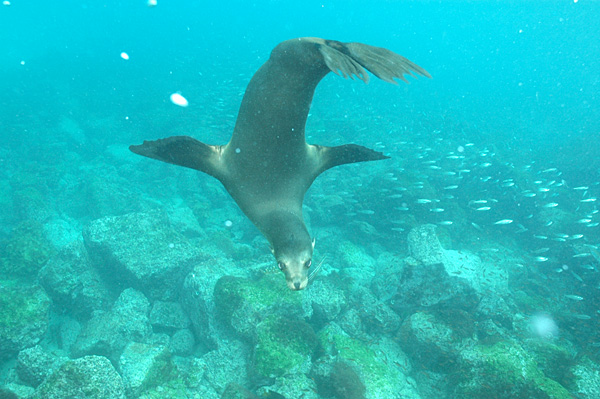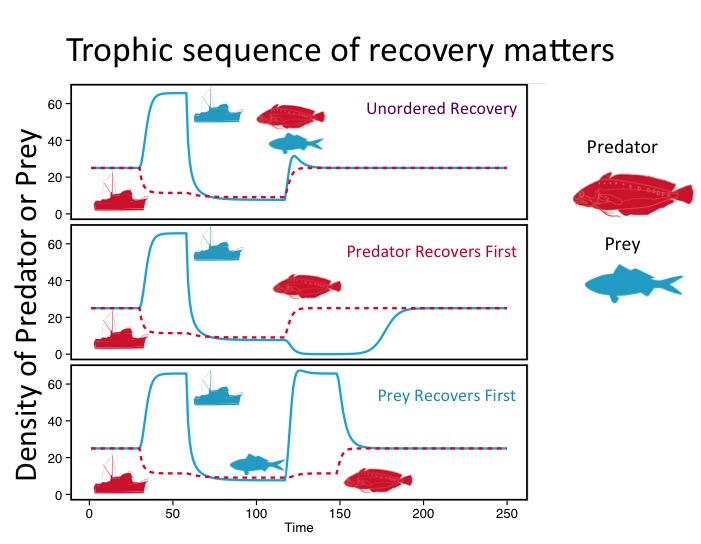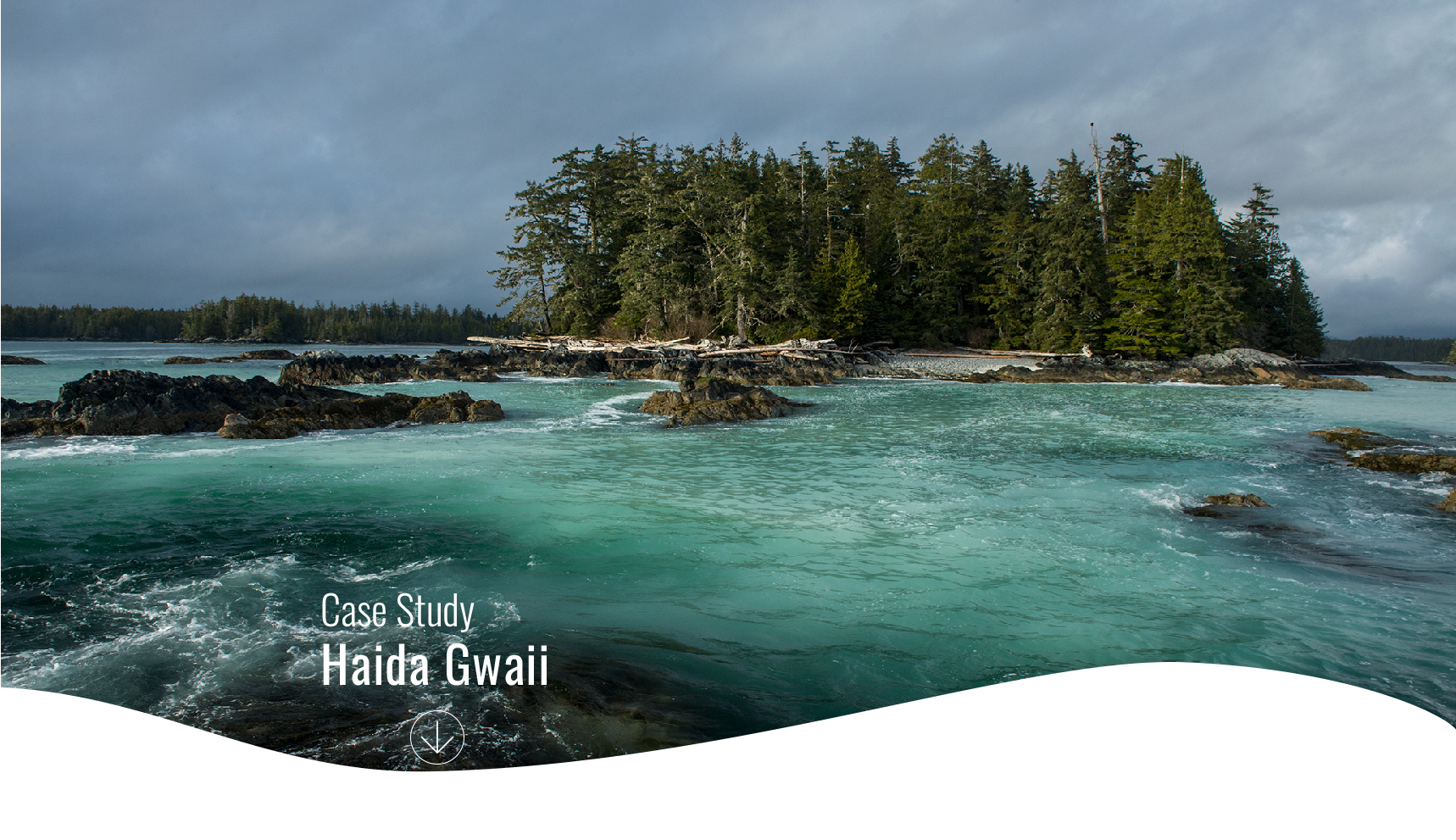Recovery of predators and prey
 Although we didn’t examine the recovery of predator populations as a driver in our spatial model, understanding these species interactions is a key element for understanding drivers of change and ecosystem shifts. This is because species can be influenced by changes to their predators, prey, or competitors, and are embedded in complex food webs with many interactions. Herring and other forage fish are key species in nearshore pelagic food webs, whose abundance can be influenced by their predators, such as humpback whales, and their food sources, primarily zooplankton. Changes in herring can also influence other species in the food web, leading to overall ecosystem shifts.
Although we didn’t examine the recovery of predator populations as a driver in our spatial model, understanding these species interactions is a key element for understanding drivers of change and ecosystem shifts. This is because species can be influenced by changes to their predators, prey, or competitors, and are embedded in complex food webs with many interactions. Herring and other forage fish are key species in nearshore pelagic food webs, whose abundance can be influenced by their predators, such as humpback whales, and their food sources, primarily zooplankton. Changes in herring can also influence other species in the food web, leading to overall ecosystem shifts.
Ecosystem history, including environmental conditions and different initial species abundances, will influence the effectiveness of different recovery strategies in systems that have crossed critical thresholds. For example, the trajectory of a prey population, such as herring, may depend on the environmental conditions and available resources, the density of competitors, and the density of predators in the system when a decision is implemented11. General lessons from theoretical and empirical studies suggest that the exploitation history of a system connected through trophic links can affect recovery11. Using a theoretical model of predator prey interactions we examined how the recovery timing of predators (e.g., humpback whales) can influence the recovery of their prey (e.g., herring)12. Our theoretical work suggests that the recovery of herring stocks may be slow because the recovery of herring predators occurred before fishing pressure was reduced on herring. Thus, recovery may require fishing levels to be reduced below the levels that originally caused a population to collapse13.

To find out more, see our research paper.
